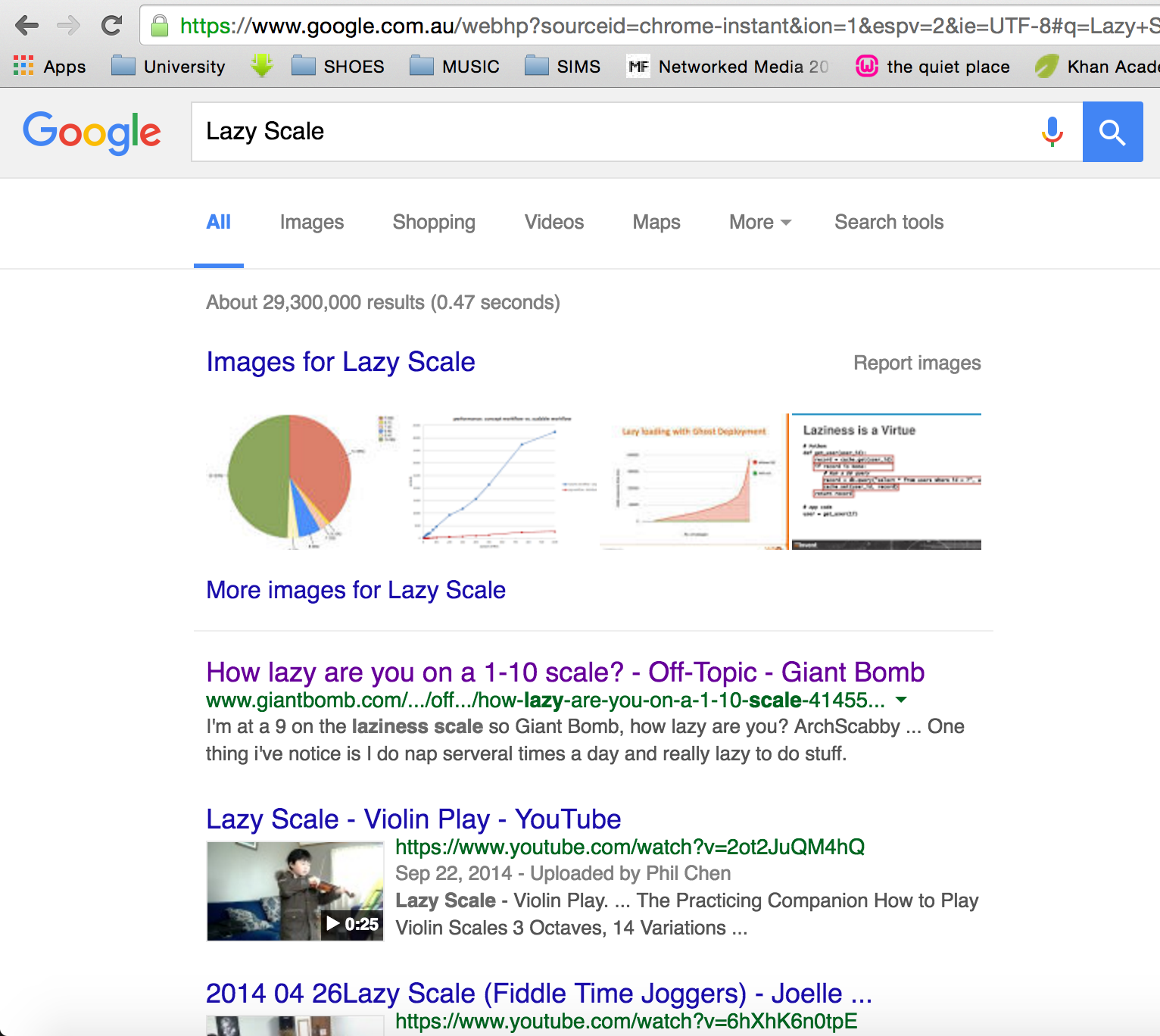I’ve never understood to the extent how lazy I really am. I mean, are there levels of laziness? Is there a laziscale?
So I’ve just done a Google Search for ‘Lazy Scale’ and this is what has come up. (Yes I did click something already but it’s only because I’m eager).

Google Search – https://www.google.com.au/webhp?sourceid=chrome-instant&ion=1&espv=2&ie=UTF-8#q=Lazy+Scale, accessed 4th April 2016.
Alright so it looks like the ‘Laziscale’ hasn’t been created yet. But let’s take a look at ‘How lazy are you on a 1-10 scale’ and see what comes up.
Ok so far all I can gather is that it’s a forum based on asking people how lazy they are. Two relatable comments to me right now from this forum are probably these two:

Screenshot of comment by user iam3green – http://www.giantbomb.com/forums/off-topic-31/how-lazy-are-you-on-a-1-10-scale-414551/, accessed 4th April 2016.

Screenshot of comment by user ArchScabby – http://www.giantbomb.com/forums/off-topic-31/how-lazy-are-you-on-a-1-10-scale-414551/, accessed 4th April 2016.
I’m pretty motivated most of the time, but sometimes I have days where I’ll do a whole heap of homework but will be too lazy to get up and make myself a coffee. The problem is, other days I’ll be more than happy to go to the pantry, but too lazy to plug in my dying computer whilst writing a 2000 word essay.
Right now, I feel too lazy to even outline what the Laziscale levels would consist of exactly… but I’m thinking in short maybe levels ranging from 1 to 5; 1 being fully motivated to do whatever comes at you, and 5 being; I have been needing the bathroom for 8 hours now but I’m too lazy to move.
So now that the Laziscale has been established, let’s chat about how I feel in this exact moment, and maybe you can tell me where you rate on the Laziscale and why in the comments below.
It’s the beginning of Week 5. I’ve just moved into a new family home 4 days ago with mum and my brothers and the oven isn’t working. A guy will arrive soon to fix it. FOR ONCE, I actually got up and got dressed and was ready for the day ahead, at 9am. However, I’ve spent 4 hours since then, on the phone to Qantas Cash, AMIST, HostPlus, my mother and a guy recording my Voice Over demo’s. Ok, so that’s not exactly lazy, but in between those calls, I have been stuck on good ol’ Facebook – in this case it’s BAD ol’ Facebook though. I probably should have done a little more work at this stage considering I have an Essay Plan and readings due next week for Music in Pop Culture, a Networked Media Assignment and readings due next week and readings for my Media studio, It’s Alive.
I guess you could say I’m a number 2 on the Laziness scale right now, fully motivated to do everything BUT university work, and that includes making multiple trips to the pantry to find that there is STILL no food from when I checked 10 minutes ago.
So this has been a pretty pointless post, but I guess it’s good that I’m blogging at all. After all, I’m always TOO lazy to blog.
Catch ya folks’!








